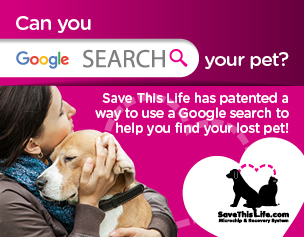Easy Steps to Prevent and Manage Disease Spread
By Fairfield T. Bain, DVM, MBA, DACVIM, DACVP, DACVECC
As the equine industry continues to experience outbreaks of highly infectious disease, such as equine herpesvirus (EHV) and equine influenza virus (EIV), biosecurity has become one of the most important topics in equine health management. And it is one of the most important discussions to have with clients. As riders prepare to attend season-culminating events, many of which will be indoors, now is an ideal time to ensure horses’ boosters are up to date and disease-mitigation measures are top of mind.
The topic of biosecurity can be overwhelming for clients, so communicating in an easy-to-understand manner will improve compliance. Start by sharing these key points:
-
Be ready. The best offense is a good defense. Establishing a biosecurity plan before an outbreak develops is critical.
-
Vaccinate. Reinforce that vaccination remains the most practical and economical means of disease prevention.
-
Check for fever. This is critical at home or on the road. If a horse has a fever, it should not be transported and should be isolated from other horses. Let clients know that animals, unlike people, often do not show definite clinical signs of infectious disease, so body temperature is often the only initial indicator.
With these basics in mind, you can guide horse owners in creating a simple and effective biosecurity plan. In general, such a plan includes the following steps:
1. Get prepared to isolate
All people and animals have the potential to carry an infectious pathogen, so unrestricted movement can increase the risk of a disease outbreak. No matter the type of facility—barn, event venue or training/boarding facility—establishing an area of isolation allows sick animals to be appropriately separated from healthy animals.
2. Take physical precautions
Counsel clients on the basic steps they can take to help prevent the spread of disease at home and away. Here are a few:
-
Prevent close contact with unfamiliar horses
-
Do not use shared water sources
-
Properly dispose of manure and soiled bedding
-
Wash hands before and after working with a horse (hand sanitizers work well in the absence of soap and water)
-
Regularly clean and disinfect equipment and tack
-
Consider allocating horse-specific equipment and avoid sharing equipment
-
After travel and upon arrival at the stable/farm/ranch, isolate and monitor horses for fever and other signs of infectious disease
-
Keep horse health records on hand at all times (health certificates are required for entry at most events and shows)
3. Agree to identify illness
Encourage clients to contact you at the first sign of an infectious disease so you can work together to prevent or slow the spread, which includes diagnosing the illness. Determining the identity of the infectious pathogen is critical in making timely quarantine and management decisions to help protect other horses and contain an outbreak.
All these elements of biosecurity will help clients manage disease in their horses. While vaccination is highly effective in preventing infectious disease, it is not the only measure to be taken, especially with highly-contagious infectious diseases such as EHV, EIV, and strangles. Helping clients understand the basic principles of biosecurity and establishing a simple proactive plan will provide broader protection for horses while they’re at home or on the road.
Copyright © 2021 Intervet Inc., d/b/a Merck Animal Health, a subsidiary of Merck & Co., Inc.


Working Here
Our team members are encouraged to be the best they can be... at Covetrus we believe we impact one another.
Learn MoreNews & Events
FDA Cautions Pet Owners Not to Feed Texas Tripe Inc. Raw Pet Food Due to Salmonella, Listeria Monocytogenes
The U.S. Food and Drug Administration is cautioning pet owners not to feed their pets any of the Texas Tripe brand raw frozen pet food listed below because several samples of Texas Tripe raw pet food have tested positive for Salmonella and/or L. mono.
Careers
Are you looking for a place to let your talents shine? At Covetrus, we help our practitioner customers better serve their patients and take pride in providing the best customer experience possible. Search our open positions to see our available opportunities.
Newsletter
Stay current with what’s going on with Covetrus, subscribe to receive our newsletter and email communications. Subscribers will receive the latest information in practice management, sales and marketing, animal health, and more.



-3-(1).png?sfvrsn=2d806d73_0)

Leave a comment